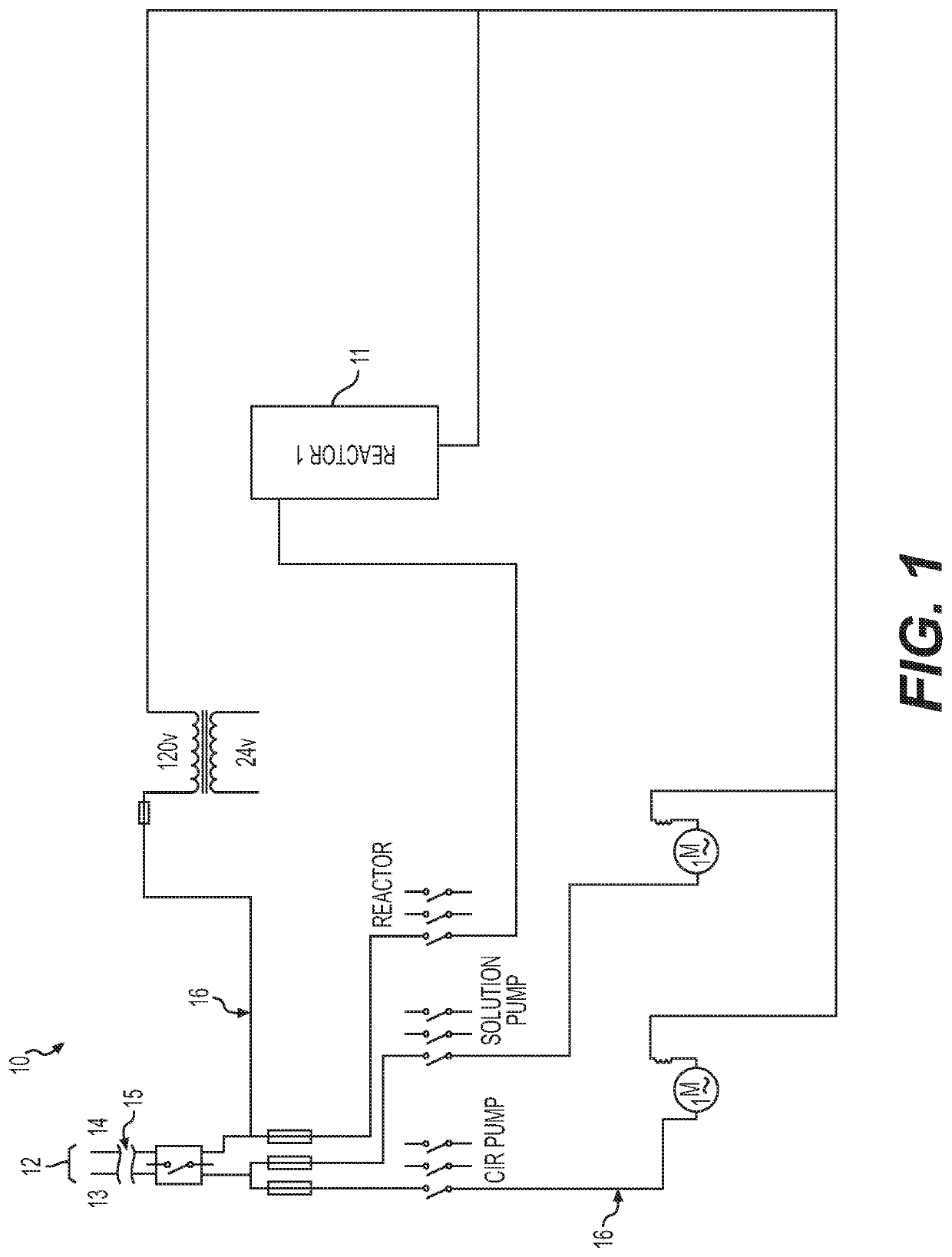Resistance method
a resistance method and resistance technology, applied in the field of resistance methods, can solve the problems that no such method has been used with the intent of doing work, and achieve the effects of increasing or decreasing the electrical resistance encountered, increasing resistance, and increasing the conductivity
- Summary
- Abstract
- Description
- Claims
- Application Information
AI Technical Summary
Benefits of technology
Problems solved by technology
Method used
Image
Examples
Embodiment Construction
[0019]For a better understanding of the invention and its operation, turning now to the drawings, preferred resistance system 10 includes one or more reactor(s) 11 each including at least two electrodes 12, at least one of the electrodes 12 defined as cathode 13 and at least one of electrodes 12 defined as anode 14. The number of placement of electrodes 12 is not intended to be construed as a limitation on the present invention, as a range of electrode number and placement are within the scope of the instant disclosure, so long as the selected number and placement utilize spark gapping to aid in the manipulation of voltage and frequency to desired levels as it travels through the solution or substance. The size and shape of reactor(s) 11 are not intended as a limitation on the instant disclosure, as any geometry that retains substance or solution 15 in a closed or substantially closed system and that can modify the resistance experienced by the electrical current produced at electro...
PUM
| Property | Measurement | Unit |
|---|---|---|
| resistance | aaaaa | aaaaa |
| electrical current | aaaaa | aaaaa |
| current | aaaaa | aaaaa |
Abstract
Description
Claims
Application Information
 Login to View More
Login to View More - R&D
- Intellectual Property
- Life Sciences
- Materials
- Tech Scout
- Unparalleled Data Quality
- Higher Quality Content
- 60% Fewer Hallucinations
Browse by: Latest US Patents, China's latest patents, Technical Efficacy Thesaurus, Application Domain, Technology Topic, Popular Technical Reports.
© 2025 PatSnap. All rights reserved.Legal|Privacy policy|Modern Slavery Act Transparency Statement|Sitemap|About US| Contact US: help@patsnap.com



